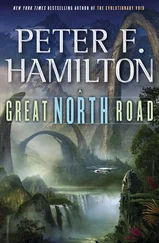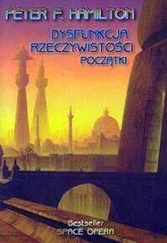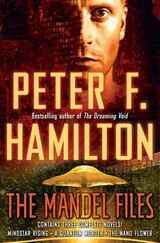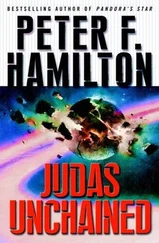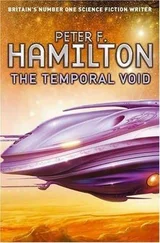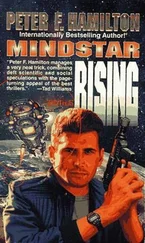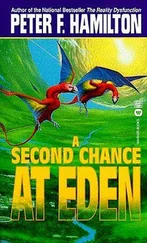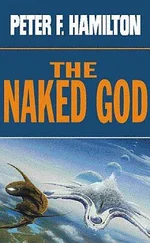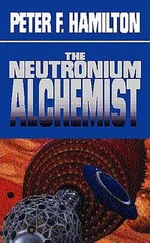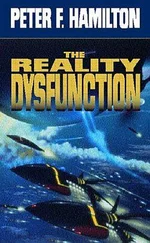Peter Hamilton - Fallen Fragon
Здесь есть возможность читать онлайн «Peter Hamilton - Fallen Fragon» весь текст электронной книги совершенно бесплатно (целиком полную версию без сокращений). В некоторых случаях можно слушать аудио, скачать через торрент в формате fb2 и присутствует краткое содержание. Жанр: Фантастика и фэнтези, на английском языке. Описание произведения, (предисловие) а так же отзывы посетителей доступны на портале библиотеки ЛибКат.
- Название:Fallen Fragon
- Автор:
- Жанр:
- Год:неизвестен
- ISBN:нет данных
- Рейтинг книги:3 / 5. Голосов: 1
-
Избранное:Добавить в избранное
- Отзывы:
-
Ваша оценка:
- 60
- 1
- 2
- 3
- 4
- 5
Fallen Fragon: краткое содержание, описание и аннотация
Предлагаем к чтению аннотацию, описание, краткое содержание или предисловие (зависит от того, что написал сам автор книги «Fallen Fragon»). Если вы не нашли необходимую информацию о книге — напишите в комментариях, мы постараемся отыскать её.
Fallen Fragon — читать онлайн бесплатно полную книгу (весь текст) целиком
Ниже представлен текст книги, разбитый по страницам. Система сохранения места последней прочитанной страницы, позволяет с удобством читать онлайн бесплатно книгу «Fallen Fragon», без необходимости каждый раз заново искать на чём Вы остановились. Поставьте закладку, и сможете в любой момент перейти на страницу, на которой закончили чтение.
Интервал:
Закладка:
Templeton was founded in 2115. At first it was nothing more than a collection of prefabricated igloos with a single track linking it to a runway bulldozed into the frozen dunes. The engineers and administrators who lived there were tasked with establishing a manufacturing base that would be self-sustaining, the idea being that once the initial investment was made, all you needed to do was shovel in local raw materials at one end and ultimately any product you wanted would pop out the other. After that, the only imports would be people and new designs to upgrade and expand the first few factories. Information cost nothing to transport between stars, while people would buy their own tickets to a new land with immense opportunities.
Over the first three years, spaceplanes ferried down their cargo from eight starship flights. At the end of it, industrial facilities in heavily insulated factories could supply most of the burgeoning colony's needs. But not all. There were always a few specialist systems or chemicals essential for the economy or special projects that only Earth with its abundant production facilities could provide. Time after time Temple-ton's governor sent back requests for additional units to be flown out, without which the whole project would stall.
The financial strain that Amethi placed on McArthur wasn't as bad as that for most other colony worlds, where human biochemists fought desperate battles against alien biospheres. Here there was just HeatSmash, the climate project, to initiate. Templeton's first indigenous industrial undertaking was to establish an orbital manufacturing station, Tarona. With that up and running in 2140—after nearly a third of its systems had been shipped in from Earth—they began local production of asteroid capture propulsion engines. Nizana had so much junk rock strewn around in orbit it could have provided HeatSmash with enough material to reheat a dozen worlds. The inaugural impact came in 2142, when a lump of stony iron rock measuring eighty meters across smacked right into the center of Barclay's glacier.
The explosion vaporized nearly a cubic kilometer of water and melted a considerably larger quantity. It had refrozen within a week. The steam clouds never even reached the edge of the glacier before they condensed into bullet-hard snow-flakes and rained down.
Once the planetary engineers had correlated all the data from their sensors, they estimated that the atmosphere would have reheated sufficiently to induce and sustain glacial melt after 111 years of one impact per year, involving asteroids four times the mass of the test impact. With this mildly favorable prognosis, the colonists set about building their new world. By the time Lawrence Newton was born in 2310, economic and social changes on the old homeworld had modified the nature of the colony. Although the physical task of terraforming the world had progressed without interruption, it was no longer a destination for exultant pioneers searching for a little homestead amid a wilderness that was slowly being resurrected.
* * *
The big school bus rolled easily along Templeton's main north highway, fat tires clinging to the grubby concrete with its lacework of fine cracks. Twenty-five kids, aged nine to twelve, chattered excitably or threw crumpled biscuit wrappers at each other before ducking down behind their seats to avoid retaliation. Mr. Kaufman and Ms. Ridley, their teachers, sat up at the front, doing their best to ignore what was going on behind. They'd left the school dome only ten minutes ago; it was going to be a long day.
Lawrence was sitting midway along the bus. The seat next to him went unoccupied. It wasn't that he didn't have friends at school; he did, as well as several cousins and a tribe of more distant relatives. He just didn't have any close friends. Teachers described him as restless. He was clever enough, naturally, given he was a Newton, but that intelligence was never quite captured by any of his academic subjects. Report after report filed with his parents had the age-old comment: can do better. In the competitive environment of the school, where application and achievement received the highest accolades, he was too different to fit in comfortably. Not quite a rebel—he was still too young for that classification—but there were plenty of danger signs that he could fall into the dropout category if something wasn't done fairly soon. It was an almost unknown development among Amethi's well-ordered population. For a member of a Board family it was unthinkable.
So he sat by himself ignoring the antics of his peers, watching the city go by outside. On either side of the highway were drab curving walls of nullthene; huge sheets of the ultrathin translucent gray membrane from which the city domes were made. The standard size was four hundred meters across, produced in one piece by the McArthur factory, and wholly indigenous. Relatively cheap, and simple to establish, it was used by every town and city on the planet. All you needed was a flat patch of land over which to spread it The sheet had a built-in hexagonal web of slim tubing made from buckyfilament carbon (extruded up at Tarona) that was pumped full of epoxy. The resultant force was enough to lift the lightweight nullthene off the ground like some giant balloon that never quite managed to become airborne. The edges had to be buried hurriedly as the membrane's molecular structure had been designed to act as a near-perfect heat trap. Air inside quickly warmed to temperate and even tropical temperatures, exerting quite a lifting pressure from within. Large circulation and thermal exchange units (also built locally) were installed around the edge, helping to maintain the required climate inside. Once the dome was up and regulated, all that was needed to reinvigorate the soil was water and terrestrial bacteria, and it was ready for planting.
Right at the heart of the city, most of the domes were communal. Above average in size at six hundred meters in diameter, they had a single apartment block skyscraper in the center, acting as an additional support for the vaulting surface. Inside, rich parkland had been established around the skyscrapers, complete with artificial lakes and streams. Nobody outside top-level management used cars to get about within the city; the domes were all linked by a comprehensive rail transit network. The only vehicles on the road with the school bus were twenty-wheel juggernauts, agroform machinery, and civil engineering trucks, all of them cheerfully pumping hihydrogen fuel fumes out into the atmosphere.
Factories filled the gaps between the dome rims, squat bunkers built from glass and aluminum. Encrustations of dust streaked the big panes, built up over years as heat and moisture creeping out of the city structures loosened up the frozen ground. Even here, the air suffered as it did in every human city, a pollution of particles and vapor that hadn't known freedom for a hundred thousand years, churned up by the whirling zephyrs thrown off by the trains and road vehicles and dome circulation fans—for decades, the only wind on the whole planet. But it allowed plants to flourish. All along the side of the road, Lawrence could see tufts of dark green grass clogging the ruddy native soil. There were even little fissures where free water had on occasion run, fed by trickles of condensation along badly insulated panels or tattered slits in the nullthene.
Farther out from the city center, food refineries began to replace the domes—industrial sites the size of small towns where pressure tanks and enzyme breeder towers and protein convectors were woven together with a maze of thick, insulated pipes. Hot vapor shivered the air for hundreds of meters above the dulled metal surfaces as small fusion plants pumped their megawatts into the elaborate processes that kept Amethi's human population alive. Each refinery had its own quarry, huge vertical-walled craters gouged deep into the frozen soil by AS-driven bulldozers. Caravans of big utility trucks trundled up and down the pitside ramps all day long, bringing hundreds of tons of elusive, rare minerals to the catalytic furnaces.
Читать дальшеИнтервал:
Закладка:
Похожие книги на «Fallen Fragon»
Представляем Вашему вниманию похожие книги на «Fallen Fragon» списком для выбора. Мы отобрали схожую по названию и смыслу литературу в надежде предоставить читателям больше вариантов отыскать новые, интересные, ещё непрочитанные произведения.
Обсуждение, отзывы о книге «Fallen Fragon» и просто собственные мнения читателей. Оставьте ваши комментарии, напишите, что Вы думаете о произведении, его смысле или главных героях. Укажите что конкретно понравилось, а что нет, и почему Вы так считаете.

